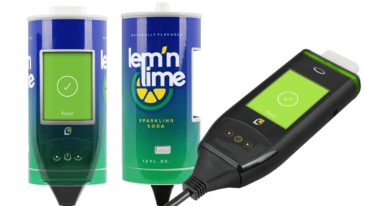
Where ignition interlock devices used to be reserved for specific DUI cases, today they have become a much more common tool for safeguarding against alcohol-impaired driving and preventing the accidents, injuries, and deaths that often result from drunk driving. However, laws surrounding the installation and usage of ignition interlock devices varies from state to state. Here’s a closer look at ignition interlock devices and the states that have mandatory interlock rules.
Understanding How Ignition Interlock Devices Work
Ignition interlock devices connect directly to your car’s ignition system. Before you start your car, you are required to blow into your IID. If your blood alcohol concentration is below the programmed limit requirement, your car will start as normal. If your BAC is higher than the programmed limit, the ignition interlock device will prevent the vehicle from starting until you provide a clean sample. Some devices may even lock your ignition for a set amount of time or prevent you from providing another sample for several minutes.
Most ignition interlock devices will also require you to provide breath samples while you are on the road. These are known as rolling retests and are another means of making sure that someone else didn’t provide the breath sample. If your breath sample’s BAC exceeds the limit or if your fail to provide a breath sample in the given amount of time, the IID will log the event and warn you to turn off your vehicle, which may be accompanied by an alarm (horn honking, flashing lights) until you turn off your car.
States That Require Ignition Interlock Devices
All states have laws that require the installation of ignition interlock devices for certain offenses or allow courts to order interlocks at their own discretion. Most jurisdictions require the installation of an ignition interlock device during or immediately after a license suspension or revocation following a DUI conviction. In some cases, an ignition interlock device is used in lieu of a license suspension.
To date, 29 states, the District of Columbia, and four counties in California have some sort of ignition interlock device requirement for first-time DUI offenders. Specifically, in 24 states, the District of Columbia, and four counties in California, first-time DUI offenders are required to install an IID to drive after a post-conviction license suspension.
- Alabama
- Alaska
- Arkansas
- California (currently only in Alameda, Los Angeles, Sacramento, and Tulare counties)
- Colorado
- Delaware
- District of Columbia
- Hawaii
- Iowa
- Louisiana
- Maryland
- Mississippi
- Nebraska
- Nevada
- New Hampshire
- New Mexico
- New York
- Oklahoma
- Oregon
- Rhode Island
- Tennessee
- Texas
- Vermont
- Virginia
- Washington
- West Virginia
Fifteen states and four counties in California require first-time offenders to have some time with an ignition interlock device to reinstate driving privileges. Find an ignition interlock installation location near you.
- Alaska
- Arizona
- California (currently only in Alameda, Los Angeles, Sacramento, and Tulare counties)
- Connecticut
- Delaware
- Hawaii
- Idaho
- Kansas
- Maryland
- Nebraska
- Nevada
- New Mexico
- New York
- Oregon
- Utah
- Washington
In nine states, you are only required to install an ignition interlock device on a first offense DUI if you had a high blood alcohol concentration at the time of arrest (usually 0.15 or above). These states include:
- Florida
- Kentucky
- Michigan
- Minnesota
- New Jersey
- North Carolina
- Pennsylvania
- South Carolina
- Wyoming
Almost all states require an ignition interlock device for repeat DUI offenses. Just five states (Indiana, Montana, North Dakota, South Dakota, and Wisconsin) do not have any mandatory ignition interlock device requirements.
Installing Your Ignition Interlock Device
Ignition interlock devices are installed by third-party vendors. The state or court will usually provide a list of approved vendors that you can choose from.
Once your ignition interlock device has been installed, you will have to present a receipt or installation certificate to the monitoring authority to prove that you received an ignition interlock device from an approved vendor. You can learn more about the interlock device cost from installation to maintenance form your provider. The monitoring authority may refer to the court, a probation officer, the DMV or related driver’s license agency, or some combination of all of them. The installer themselves may electronically notify the monitoring authority themselves, though it’s a good idea to double-check so that you don’t suffer any fines or penalties.
Give us a call today to see if we have an ignition interlock location near you.
Sources:

